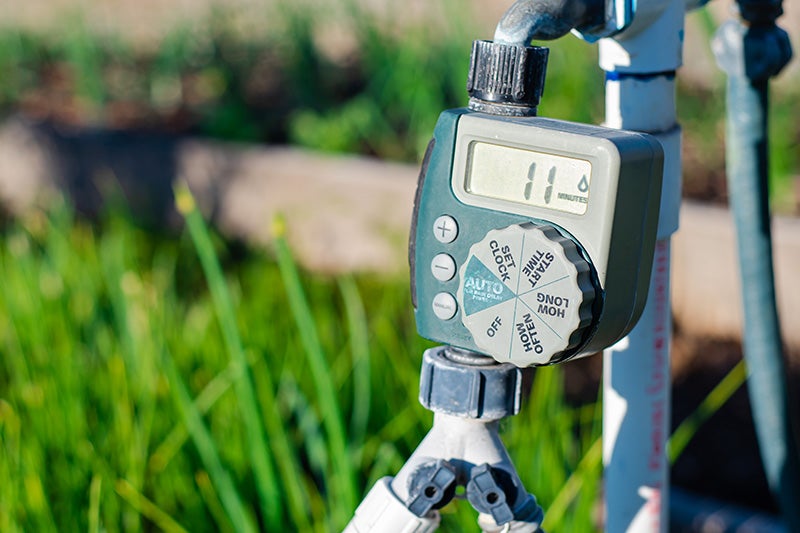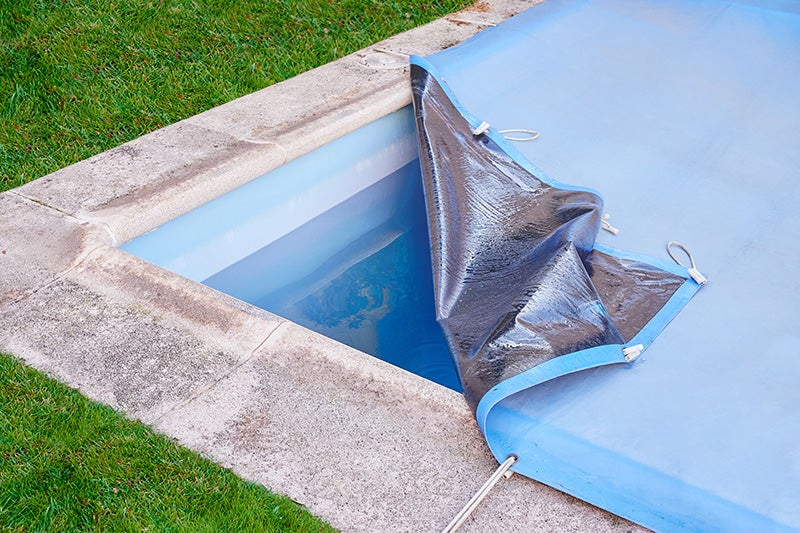Water wisely and keep a healthy landscape with these helpful tips on watering frequency and times, your sprinkler system, pools, hoses, soil, lawn, and plants.

Watering frequency and times
- Avoid watering every day, especially in the spring and early summer. You’ll encourage roots to grow down to seek water and lessen the potential for plant diseases.
- Complete your watering before 6:00 a.m. to take advantage of calm air, the lowest temperatures of the day, and fewer competing water uses. There are even timers you can attach to your hose bib that can help you do this if you don’t have an automatic system.
Your Sprinkler System
- Run your sprinkler system manually about once a month to observe each zone operating. Are sprinklers working properly, pointing the right direction, and spray patterns not obstructed by vegetation?
- When you run your sprinklers, does the water come out in a fine mist, much of which just goes up into the air? This is a sign that the water pressure is too high for your sprinklers. Add a pressure regulator to your sprinkler system to eliminate this, and you could cut your sprinkler water use in half.
- Consider drip irrigation in shrub areas, and always irrigate grass separately from areas with shrubs and trees. If you’re installing an automatic irrigation system, make sure you install a good system from the start, as making changes later will be much more difficult. Also, make sure that you install proper backflow prevention devices. They are required for a good reason: to protect your household water supply and that of your neighbors.
- The goal of an irrigation system is to provide water as uniformly as possible. To help achieve this, make sure sprinkler spray patterns overlap, with all portions of your lawn receiving water from at least two sprinkler heads.
Make it easier on yourself with a smart controller! See our rebate here.
Pools and Hoses
- Keep pools covered when not in use so you won’t lose water to evaporation; keeping them just a little less full will also lessen the amount of water lost by splashing out.
- Surprising amounts of water can run from an open hose left running for just a few minutes. Always attach a sprinkler or soaker hose for more effective sprinkling without using nearly as much water. When using a hose for hand watering plants or washing cars, attach a nozzle that will shut off between when not being used.
Click here for more water wise pool tips.

Soil, Lawn, and Plants
- In our clay soils, water can’t soak in quickly. Instead of a single long watering cycle, run two or more shorter cycles with about an hour break between them. That way, water from each cycle can soak in before more is applied. Standard spray sprinklers can apply more water than clay soils can absorb in as little as five minutes, even less if your yard is sloped.
- Aerate lawns each spring to help water soak in and fill the holes.
- Prune in the spring or don’t prune at all; pruning stimulates growth, which needs more water.with compost so that water can infiltrate deeper.
- Consider the long-term survivability of your current landscape and consider incorporating more climate-appropriate plants. Before selecting your plants, study your environment; consider animals that exist in your landscape and your long-term needs, and make good ecological choices.
- Consider whether your yard has lawn areas that aren’t being used and could be replaced with something less demanding of water and maintenance, such as ground covers and shrubs or a patio sitting area.
Resources
Consider these other ways to use water efficiently outdoors:
For more information, contact our Water Efficiency Team at conserve@medfordwater.org or by calling either 541-774-2436 or 541-774-2438.